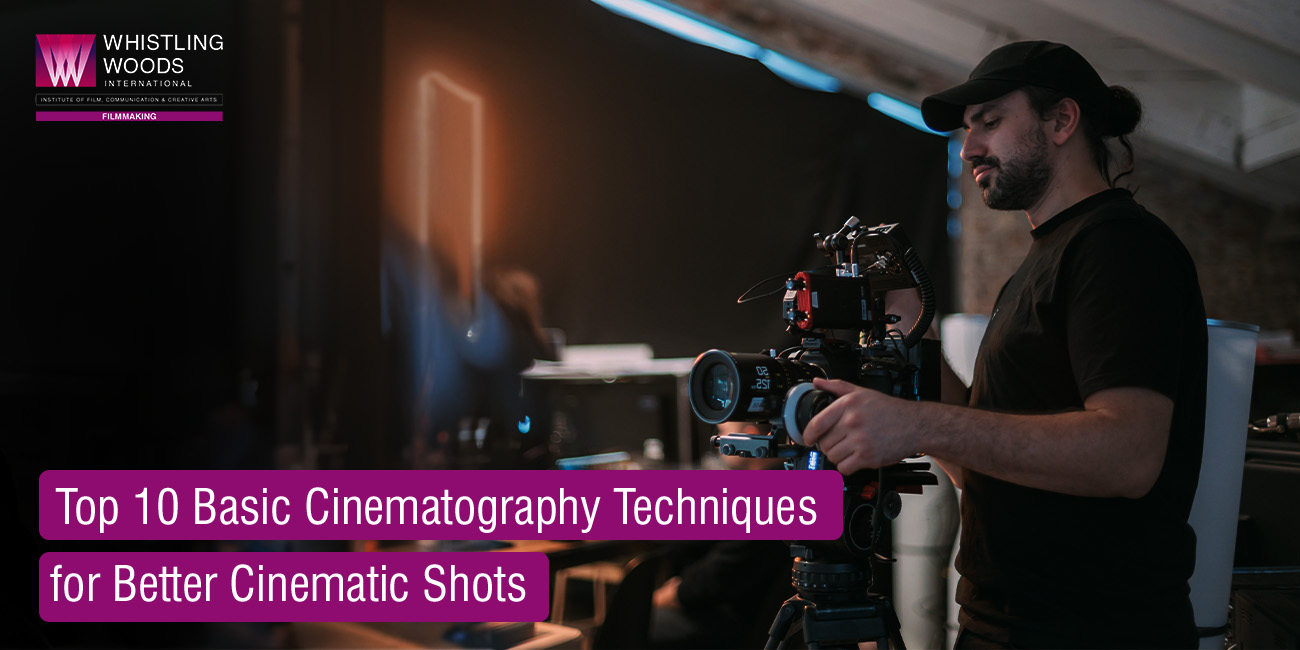Lights, cameras, and beautiful cinematic shots!
We wish cinematography was that simple. But when we are talking about the art of visual storytelling, cinematography requires plenty of skills. To become a renowned cinematographer, you need to learn more than just the technical know-how; you must focus on mastering cinematography techniques to get that perfect shot!
But before you master the complex cinematography techniques, let’s work on some basic skills to control what the viewers see and how your image is presented to them.
In short, you must choose the best shooting techniques to portray the stories how you want. Here is a cinematography techniques list that you can consider to get those perfect cinematic shots:
List of 10 Film & Cinematography Techniques:
Bird’s Eye Shot:
One of the best cinematography techniques on the list is the bird’s-eye shot. This angle is widely used for establishing scene transitions and perspectives, showing a vast scale from a high angle. It captures landscapes in abstract shapes and features such as trees, roads, and buildings arranged in lines.
Close-Up Shot:
When discussing basic cinematography techniques, we must mention the Close-Up Shot, which frames the subject from the head to the chin and neck, immersing viewers in the character’s emotions. This shot focuses intensely on the face, minimising the background to emphasise the character’s facial expressions.
Also Read: The Filmmaking Process For Beginners
Extreme Long Shot:
Do you love those beautiful and detailed forest shots? Well, this technique is what makes them happen! Any filmmaking course in India would likely include this technique in its curriculum because of its ability to capture a wide range of subjects and showcase them about their environment. It’s widely used for establishing shots when transitioning from one city or large area to another.
Medium Shot:
Next on the list of cinematography techniques is the Medium Shot, which brings viewers closer to the subject. This technique informs storytelling effectively, often framing a person from the waist up during dialogues, interviews, or group scenes. It allows for a closer capture of the actor’s expressions and emotions, enhancing detail.
Zoom Shot:
One shot that has evolved significantly in its use is the Zoom Shot. Whether you’ve enrolled in a Filmmaking Institute in India or are learning on your own, mastering this technique is worthwhile. It involves keeping the camera in a fixed position while adjusting the camera lens’s focal length. The Zoom Shot is widely used to naturally focus on an object, scene, or character, ensuring minimal distractions from the story.
Over-the-shoulder Shot:
One of the most important cinematography techniques, the Over-the-Shoulder shot (OTS), informs viewers about where the actor or character in the movie is looking and interacting. It is typically used to reveal the interaction and connection between characters in a scene. This shot involves framing the off-screen character’s head or shoulders to provide full coverage of the on-screen character.
Dutch Angle Shot:
Rotate the camera vertically until the horizon is no longer parallel with the bottom of the frame, and you have the Dutch Angle shot! This shot is renowned for portraying disorientation and uneasiness in the film’s narrative. If you want to depict the unstable emotions or mental state of a character, this shot can add an unsettling feeling to the scene. It is a technique widely used in horror and noir films.
Must Check: The Different Roles in Filmmaking
Point-of-view Shot:
The trend of POV is here, and so is this shot. One of the best cinematography techniques that conveys to viewers what the character is seeing in the scene is the Point-of-View (POV) shot. It creates an immersive experience, making viewers feel present in the film. The shot can be stationary or moving.
Tilt Shot:
You already know from the name that it involves tilting the camera for the shot. But imagine adding elegance to it by carefully coordinating downward or upward camera movements with actions in the scene. This technique adds extra focus to the scene! You can use this shot to establish a wide-angle view or to slowly reveal something at the end.
Panning Shot:
It’s a tilt shot, but better! You can use this horizontal shot to show the surroundings by keeping the panning smooth and accurate and adding movements if there is an action on the scene while keeping a composed frame involved. Make sure to execute the movements well so that they look natural and unnoticeable, making it impossible for the viewers to be distracted from the story.
Sculpt A Perfect Cinematic Shot With Whistling Woods International:
Searching for a filmmaking course in India? Want to shoot any scene like a pro? Well, that is possible with WWI, a leading Filmmaking Institute in India! Learn to paint and sculpt a meticulously crafted scene by learning cinematography techniques from the experts at Whistling Woods International. With our cinematographic courses, you are sure to learn how to optimise your camera settings for immersive video, apply storytelling to the shots, replicate cinematic movie-like movements, capture or film landscapes, people, and architecture like a professional, add professional lighting to the scene, and the list goes on and on!
At WWI, we offer you a comprehensive range of courses that deliver you the most up-to-date cinematography know-how and techniques under the guidance of industry experts who have dominated the realms of Cinematography!
If your dream is to become a skilled videographer or cinematographer, then we are here to make your dream come true with our Cinematography courses!
Enroll in our extensive range of courses today and become the skilled cinematographer that you have always dreamed of becoming!

